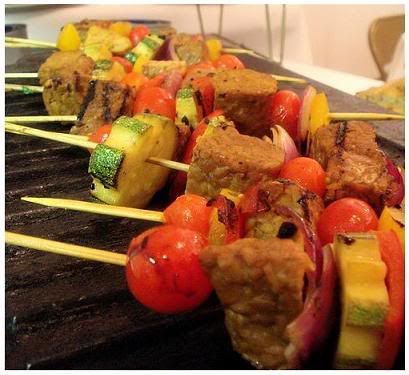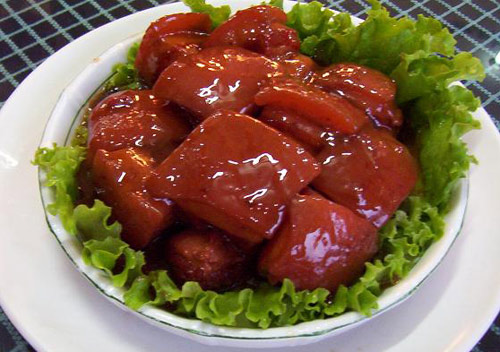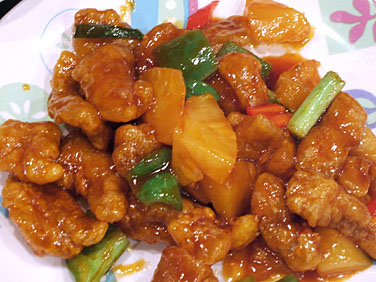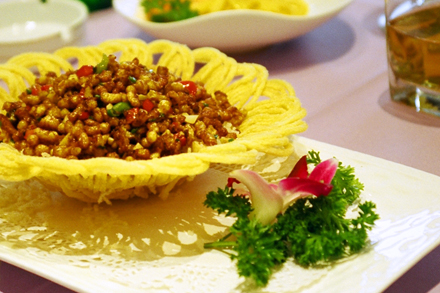


THERE'S nothing fancy about the Boat yard Cafe, in the Dodson Boatyard in Stonington, and that's part of its charm.
The L-shaped dining room facing the water is small, seating 25 at most. But if the weather permits, the prime place to eat is on the canopied deck directly overlooking the marina. Inside and out, the green and white decor is simple, with striped plastic tablecloths outside, fabric ones inside. The menu is more interesting than the makeshift look of the cafe suggests, and the operative word is seafood.
What makes the Boatyard Cafe different from the usual seaside breafast-to-dinner place is that so much tastes freshly made. In an order of grilled mussels, for example, we were served seven juicy mussels in their shells, tucked beneath a well-seasoned bacon, garlic and crumb topping that bore no resemblance to the tired pouch of gummy breading one so often encounters.
Maryland crab cake had a similarly fresh appeal. While there could have been greater generosity with the crabmeat, the patty was well-seasoned, loosely packed and crisply browned, enhanced by a sauce of sour cream laced with capers and Dijon mustard. Salad came with each entree, and it was a lively one -- curly endive, radiccio, red oak and iceberg lettuce, tossed with a creamy (and zesty) Dijon dressing.
A spicy surprise was an order of Nantucket sea scallops, which was served in a generous portion, sauteed to a well-turned brown with scallions, parsley and a peppery Cajun flair. Also on the plate, as with all entrees, was a nicely seasoned mixture of plain and wild rice, along with a mountain of delicious onion-accented squash with a hint of curry.
Not everything was a smash hit. Sesame chicken looked O.K. -- five browned fingers of white meat sprinkled with sesame seeds -- but tasted burned, and indeed the underside of each piece was charcoal-black. When a replacement was served, the waiter said, "Perhaps you'll like this better." (Well, yes. Wouldn't you?) The second try consisted of two breasts, not fingers, and while not burned was somewhat dry and flavorless. A cup of chicken and mushroom soup, with a soupcon of lemon grass, had the gluey consistency of cornstarch, not the fresh taste found elsewhere.
Desserts at the cafe were a delight, notably a rich, dark, spicy pumpkin pie (a dollop of whipped cream would help lighten its intensity), a nicely textured apple-cranberry crisp (topped with a crunchy mix of oats and walnuts) served warm, and blueberry-plum crisp, a variation, also warmed, and just as much of a textural treat.
Dinner for two came to $49.50, before tax, tip or beverages. The cafe serves no liquor, but guests are welcome to provide their own wine or beer.
Anyone passing by on Interstate 95 will find the Boatyard Cafe a cheerful detour, whether for a hearty breakfast of eggs, pancakes or French toast, or for a simple lunch or dinner. Considering its minuscule size and popularity, it is prudent to make reservations for dinner. COMINGS AND GOINGS
It has not been a banner year for restaurants. The Brasserie St. Germain in Westport didn't last long enough to be listed in the 1994 telephone directory. In fact, it opened in April and was gone by September, perhaps setting some sort of record. Also gone with the recent winds: Cafe de la Plage (in Westport, replaced by the Beach House), Amadeo's (also in Westport), A Garden Cafe (Riverside), the admirable Bec Fin Fish Market and Cafe (Old Greenwich), Fork and Spoon (a Thai restaurant in Danbury), Sagebrush Cafe (Georgetown), and La Strada (Greenwich). The Boatyard Cafe
Good
194 Water Street (between Mathews Street and Alpha Avenue), Stonington. 535-1381.
Atmosphere: A small cafe serving 25 inside, plus an enclosed (but unheated) deck facing the marina.
Service: Friendly but inadequately trained, serving a second course before the first was finished.
Recommended dishes: Pumpkin pancakes, blueberry pancakes, mushroom omelet, Maryland crab cake, grilled mussels, Nantucket sea scallops, pumpkin pie, blueberry-plum crisp, apple-cranberry crisp.
Source : http://query.nytimes.com/gst/fullpage.html?res=9A04EFDA1E3AF931A35753C1A962958260&sec=travel&spon=&pagewanted=1












































